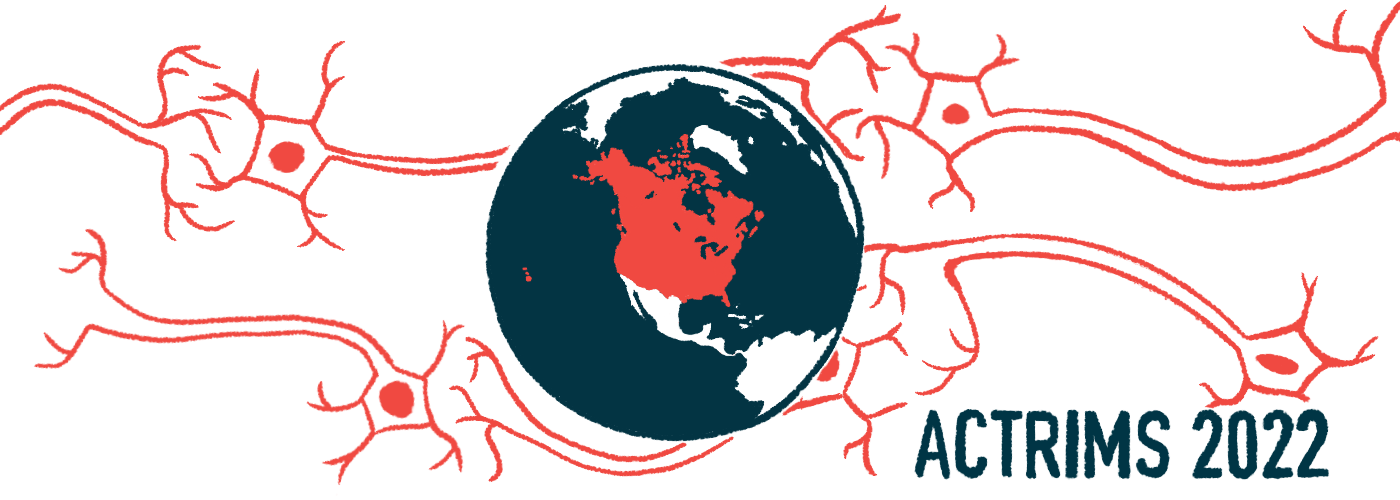#ACTRIMS2022 – Cortical Lesions Seen to Predict Disability Worsening

A higher burden of lesions in the brain’s cortex is associated with a greater likelihood of disability worsening in multiple sclerosis (MS) and transition to secondary progressive MS (SPMS), researchers report.
These results suggest that “monitoring cortical lesion volume … could be useful when stratifying risk of disability worsening and transition to progressive MS in the near term,” said William Andrew Mullins, a post-baccalaureate trainee at the National Institute of Neurological Disorders and Stroke.
Mullins presented the research at the Americas Committee for Treatment and Research in Multiple Sclerosis (ACTRIMS) Forum 2022 in the talk “Cortical lesion burden is associated with worsening disability over time and conversion to progressive MS.”
MS is caused by an erroneous immune attack against the myelin coating that surrounds nerve fibers, leading to areas of damage in the brain. Most of these lesions are found in the white matter, which contains the nerve fibers that connect different brain regions to each other.
Lesions in the cortex — the outermost layer of the brain — are also common in MS patients. The clinical implications of these lesions remains incompletely understood, though emerging research indicates they may help to predict the risk of worsening disability.
“To understand the clinical implications of cortical lesions and their effect on disease course, we’ve been following a cohort of 64 participants” over time, Mullins said.
Of the patients, 45 had relapsing-remitting MS (RRMS), 15 had SPMS, and the other four had primary progressive disease (PPMS). Most patients were female, and the average age was 49. The study specifically recruited patients who had no new lesions in the previous year, Mullins noted.
All underwent regular clinical assessments and MRI scans to measure cortical lesions for a median of three years. Using statistical analyses, the researchers looked for associations between cortical lesion load and various clinical disease features.
At the study’s start, cortical lesion volume correlated with multiple measures of disability — in other words, people with more or larger cortical lesions tended to have more severe disability. Cortical lesion load also was significantly higher among patients with progressive MS (SPMS or PPMS) relative to those initially diagnosed with RRMS. These findings are generally consistent with prior research, Mullins said.
Over the study’s duration, five of the RRMS patients progressed to SPMS. These people had a significantly higher total cortical lesion volume at study start (baseline) than those who did not progress. Notably, analyses of other types of lesions (white matter or spinal cord lesions) and of brain volume did not detect significant differences between progressing and non-progressing patients.
In general, relationships between cortical lesions and disability were “quite varied,” Mullins said, depending on the specific measure used to assess disability.
To simplify their analysis, the researchers divided patients into those who did or did not experience meaningful disability progression — defined as an increase in Expanded Disability Status Scale (EDSS) scores or a 20% or greater worsening in the 9-hole peg test or 25 feet timed walk, which respectively measure dexterity and walking ability.
Based on this distinction, 37 patients were found to have stable disability, while 22 had worsening disability. As expected, those with worsening disability were more likely to have progressive disease; other measures generally were comparable between the groups.
Patients with worsening disability also had significantly higher cortical lesion volume at the study’s start compared with those with stable disability. Other lesion types and brain volume were not significantly different between the groups.
“It’s very possible that cortical lesions may be one of the best markers for disability progression, as opposed to more traditional measurements like spinal cord lesions or white matter lesions,” Mullins concluded. He noted that the results imply that these lesions predict disability “years after [the lesions] have formed.”
In a separate ACTRIMS presentation, Mullins and other scientists analyzed data from a subset of these patients to assess the appearance of new cortical lesions over time. Findings were in the poster, “New Cortical Lesion Formation is Rare in Both Relapsing and Progressive MS with Stable White Matter Lesions.”
Results over two years generally showed that few patients with stable white matter lesions developed new cortical lesions. Most of those who did were people with active MS and new white matter lesions. Statistical analyses also showed that patients who were older or had a longer disease duration tended to have more new white matter lesions, but no such association was found for cortical lesions.
Given that new cortical lesions are rare and linked to disability worsening over time, the researchers concluded that “the association of cortical lesions with progressive disease is likely driven by long-term effects of cortical lesions that form early on in disease.”
Editor’s note: The Multiple Sclerosis News Today team is providing in-depth coverage of the ACTRIMS Forum 2022 Feb. 24–26. Go here to see the latest stories from the conference.





